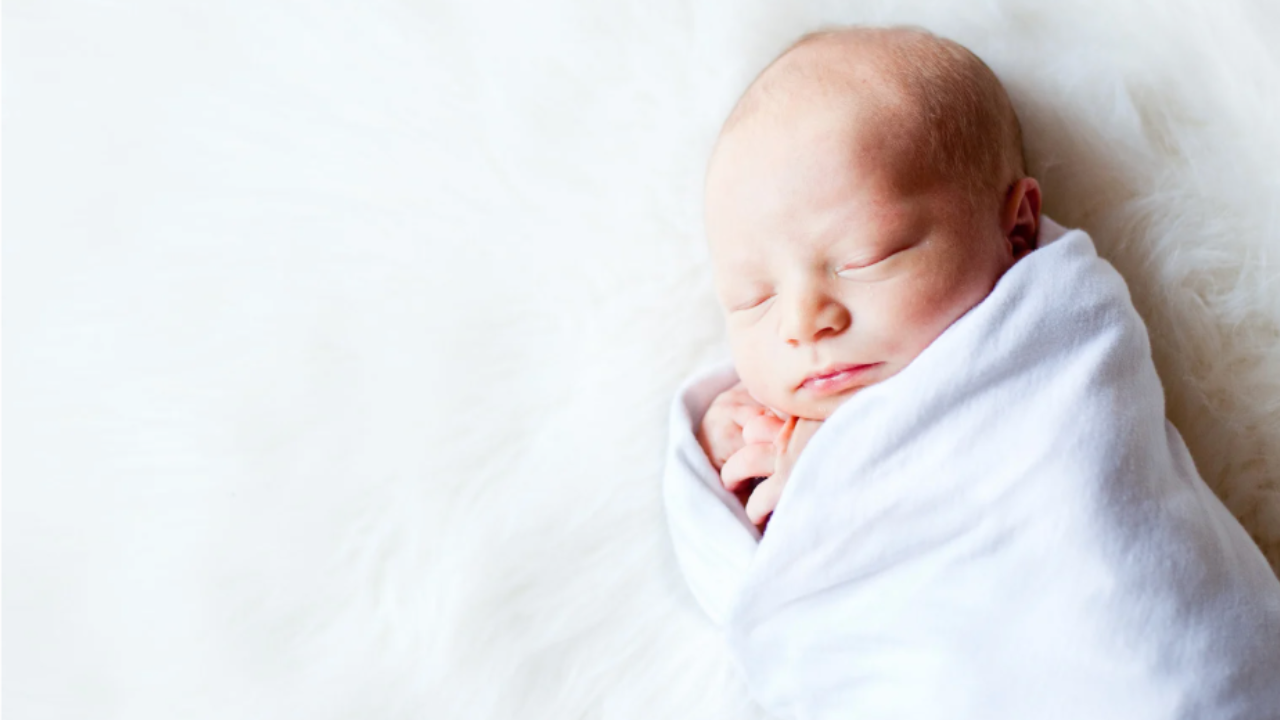Help! My Baby's Head is Flat!
I know that subject caught your eye because maybe your baby’s head has become flat and it’s something that keeps you up at night…
Or maybe you visited the pediatrician and they stated your baby has some head flattening on one side or the back.
I’ve been there… with my own child and I know exactly how you are feeling.
And I promise, you are not alone.
In fact, plagiocephaly, or “flat head syndrome”, affects approximately 50% of infants. This percentage has increased significantly with the “Safe to Sleep” campaign where parents are advised to place an infant on their back to sleep to reduce the risk of SIDs.
So, what is the reason for this very common issue in infants, and most importantly, how do we fix this before our baby needs a helmet!?
On average, a newborn sleeps 14-17 hours per day leaving only 7-10 hours of wake time for baby to avoid lying on the back of their head.
An infant’s skull is very soft and the mass is redistributed based on the pressure applied from a surface. This is why flattening occurs so easily in infants because the pressure is constantly on the back during sleep.
Download our free “flat head” guide here to learn more about preventing & correcting “flat head” with your baby.
Couple this with a side preference and you have an infant with flattening on one side of their head.
From birth to 4 months, the head changes at a 50% faster rate than it does after 4 months. From birth to 4 months is when flattening is usually seen and can be corrected quickly. Head shape is not permanent until 12-18 months, so even if your baby is older, there is still time to correct positionally.
So what is positional correction and how do I do it!?
Since babies spend a large amount of time sleeping, we have to address the sleeping position first.
During sleep, positioning the infant on the side opposite the flat spot will assist in rounding out the head by redistributing the pressure.
When the infant is sleeping, position the baby so they are looking out of the crib to the non-preferred side if they are awake. This will encourage them to place pressure on the non-preferred side while attending to environmental stimuli.
So is sleep the only place we can control your baby’s position to correct the head flattening!?
There are other places your baby spends time on their back in addition to sleep. For example, your baby may spend time in a swing, or bouncer, or maybe they lie on their back during play with a mobile or play gym above their head.
These are key places to correct any head flattening and prevent any additional head flattening from occurring.
Placing your baby in a container (swing, bouncer, etc.) should be limited, but in the event that you do use these types of products, you want to avoid your baby fixating to the non-preferred side. You may position the swing with all environmental stimulation on the non-preferred side or place a toy on their non-preferred side to encourage sustained turning.
During play, you want to avoid your baby fixating to the non-preferred side in back play or tummy time. We want your baby to be able to attend to items in all directions during back play, and pressure on the non-preferred side is best. In tummy time, encourage your baby to attend to toys in the center and in all directions equally to allow free neck movement and prevent further flattening.
Are their other areas we can control positioning to correct your baby’s head flattening!?
Additional places to correct the head flattening and prevent further flattening are changing tables or surfaces, while holding your baby, and while your baby feeds.
Want specifics "flat head" correction help!? Join the Bloom by Infant Insights membership to access correction tips that have helped over 1300+ babies avoid a cranial helmet!
During changes, position baby to look at the caregiver on their non-preferred side. For example, if your baby has head flattening on the right side, positioning them with their head on the right side of the changing table will encourage them to look at the caregiver to their non-preferred left side. If your baby has head flattening on the back of their head, consider rotating the position to encourage baby to look both ways.
While holding your baby, you want to avoid sustained pressure on the back of their head. This may be holding your baby upright, over your shoulder, or looking to the non-preferred side(s). This will eliminate baby’s head from touching a surface therefore preventing further delays flattening.
In addition to holding your baby, when you feed your baby you may consider feeding them in a way that avoids pressure on the back of their head as well. If you are a nursing mother, this may mean positioning them in a sidelying position or in an upright semi-seated position.
Implementation of these positional strategies will help correct your baby’s head flattening and reduce the risk of further flattening.
So… is head flattening purely cosmetic?
Great question!
Usually, in my experience as a pediatric occupational therapist specializing in infant head shape and milestones, head shape can indicate neck movement restrictions.
Often times parents hear the word “torticollis,” in relation to neck movement restrictions but a diagnois does not have to be indicated for tension to be present.
If your baby has a side preference, this may indicate that they have tightness on one side of the neck compared to the other.
If your baby has flattening on the very back of their head, they may have some restrictions rotationally to both sides.
Check out this post for some sneaky neck stretches for baby!
So, what’s next for my baby if they have head flattening?
The sooner you position your baby to correct the head shape and reduce body tension the better! Taking a whole body approach is best when addressing head shape because if tension is present this may affect later milestone movements like rolling and crawling.
I recommend reaching out and scheduling a consultation or contacting us at Infant Insights, so we can get you the tools you need individually to round your baby’s head without a helmet!
Don’t let this keep you up at night anymore! I am here to help through my proven head shape correction program.
Look for more blog posts to come in the future regarding all things head shape, body tension, and infant milestones!
Thanks for being here with me!
Brooke, OTR/L
Owner of Infant Insights, LLC
Download our free “flat head” guide here to learn more about preventing & correcting “flat head” with your baby.






